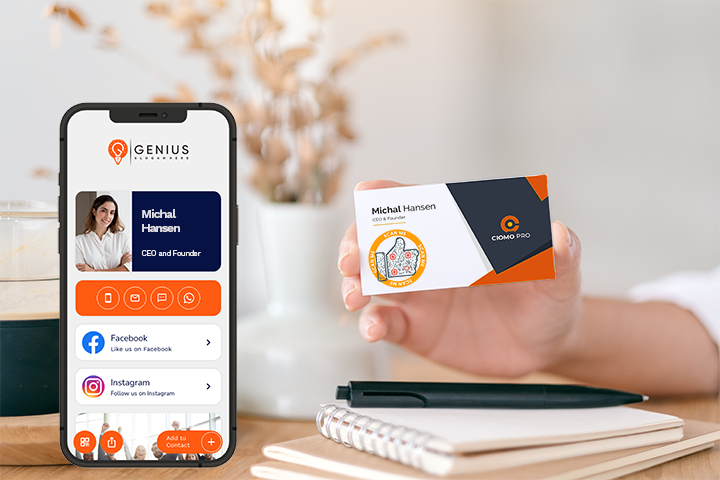
Introduction:
In a world where digital interactions are the norm, traditional paper business cards are quickly becoming outdated. Digital business cards offer a sleek, modern alternative that not only simplifies networking but also aligns with today’s tech-savvy and eco-conscious environment. In this blog post, we’ll delve into the advantages of digital business cards, provide a step-by-step guide on how to create one, and share best practices to ensure you make the most of this innovative tool.
1. What Are Digital Business Cards?
Digital business cards are virtual versions of traditional business cards. They can be shared electronically via email, text, or QR codes and often include interactive elements such as clickable links, multimedia, and social media profiles. Unlike paper cards, digital business cards are dynamic and can be updated instantly to reflect any changes in your professional information.
2. Benefits of Digital Business Cards
Sustainability: Digital business cards reduce the need for paper, helping to conserve natural resources and reduce waste. By opting for digital, you contribute to a more sustainable future.
Cost Efficiency: Say goodbye to the recurring costs of printing and reprinting. Digital cards require a one-time setup with no additional expenses for updates, making them a cost-effective choice.
Enhanced Features: With digital business cards, you can include interactive elements like clickable links, videos, and social media buttons. This provides a richer, more engaging experience compared to traditional paper cards.
Instant Updates: Easily update your contact information, job title, or other details in real-time. This ensures that your network always has the most current information without needing to reprint cards.
Convenience and Accessibility: Share your card instantly via email, SMS, or QR codes, and access it from any device. This convenience makes it easy for recipients to save and retrieve your information.
3. How to Create a Digital Business Card
Choose a Platform: Start by selecting a digital business card platform that fits your needs. Popular options include HiHello, CamCard, L-Card, and others. Each platform offers unique features, so choose one that aligns with your goals.
Design Your Card: Customize your digital card to match your personal or company brand. Use your logo, brand colors, and preferred fonts to create a cohesive and professional look.
Include Key Information: Make sure your card features essential details such as your name, job title, company, contact information, and links to your website and social media profiles. Adding a professional photo or brief bio can enhance your card’s appeal.
Test and Share: Before sharing, preview your digital card on various devices to ensure it displays correctly and all interactive elements function properly. Once satisfied, share your card through your preferred channels.
4. Best Practices for Digital Business Cards
Keep It Updated: Regularly review and update your digital card to ensure that all information is accurate. This helps maintain professionalism and prevents any potential confusion.
Personalize for Your Audience: Tailor your card’s content based on the recipient’s industry or interests to make a more impactful impression. Adjust the focus or links to align with the recipient’s needs.
Utilize Analytics: If your platform offers tracking and analytics, use these features to monitor how often your card is viewed and interacted with. This data can provide valuable insights into your networking effectiveness.
Follow Up: After sharing your digital card, send a follow-up email or message to reinforce the connection. Reference your interaction to help solidify the relationship and continue the conversation.
5. Emerging Trends in Digital Business Cards
CRM Integration: Many digital business card platforms are now integrating with CRM systems, allowing for better management and tracking of your networking connections.
Augmented Reality (AR): AR technology is being incorporated into digital business cards, offering interactive and immersive experiences that captivate recipients in new ways.
Blockchain Technology: Blockchain is being explored to enhance the security and authenticity of digital business cards, helping to prevent fraud and ensure data integrity.
6. Conclusion
Digital business cards are transforming the networking landscape with their modern features, cost savings, and environmental benefits. By embracing this technology, you can streamline your networking efforts, stay ahead in the digital age, and make a lasting impression on your professional contacts.